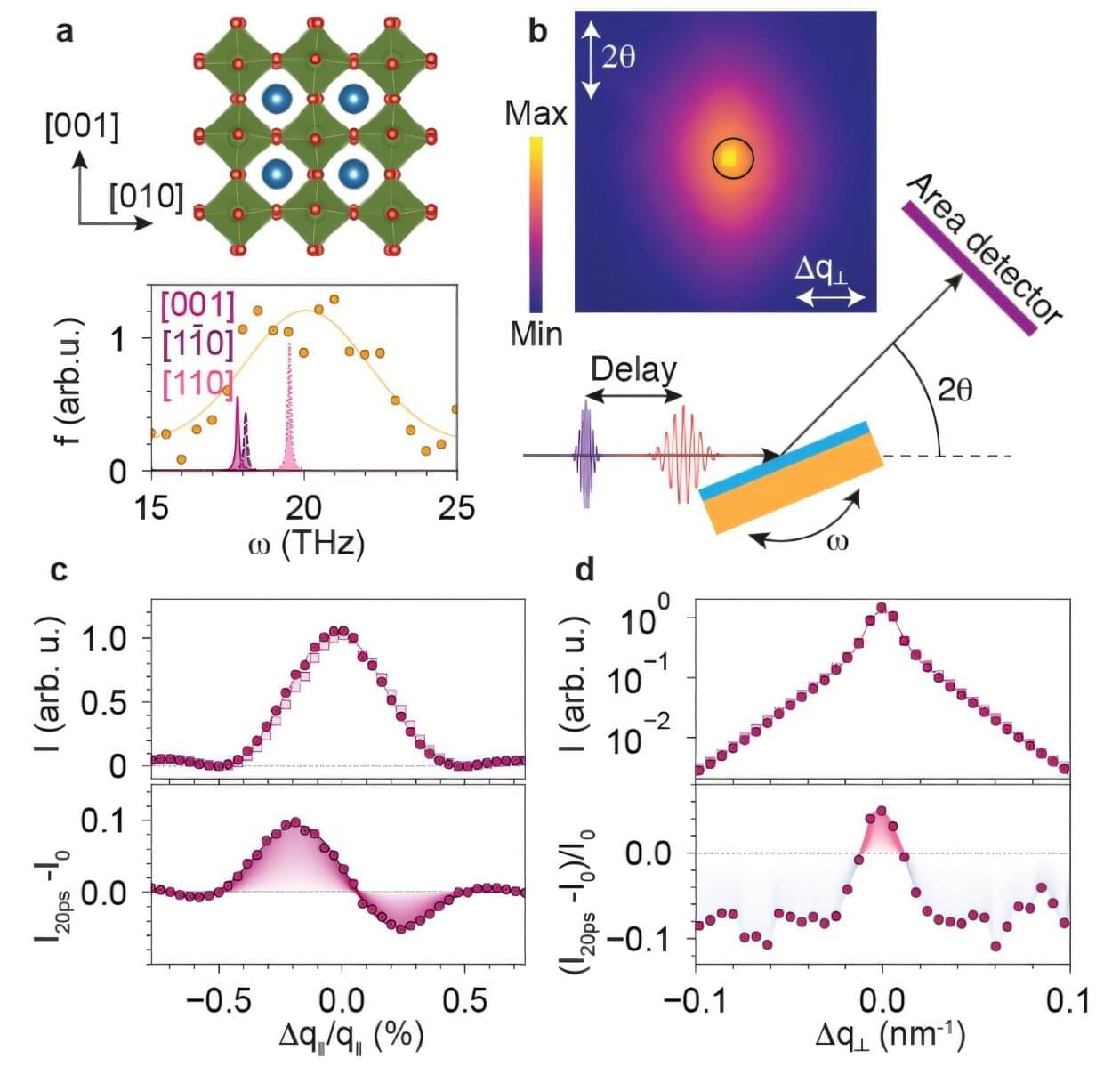Cornell Engineering researchers have demonstrated that, by zapping a synthetic thin film with ultrafast pulses of low-frequency infrared light, they can cause its lattice to atomically expand and contract billions of times per second—strain-driven “breathing” that could potentially be harnessed to quickly switch a material’s electronic, magnetic or optical properties on and off.
The research was published in Physical Review Letters. The paper’s co-lead authors are former postdoctoral researcher Jakob Gollwitzer and doctoral student Jeffrey Kaaret.
Stretching and squishing a material to induce strain is a common method to manipulate its properties, but using light for that purpose has been less studied, according to Nicole Benedek, associate professor of materials science and engineering, who co-led the project with Andrej Singer, associate professor of materials science and engineering in Cornell Engineering.
